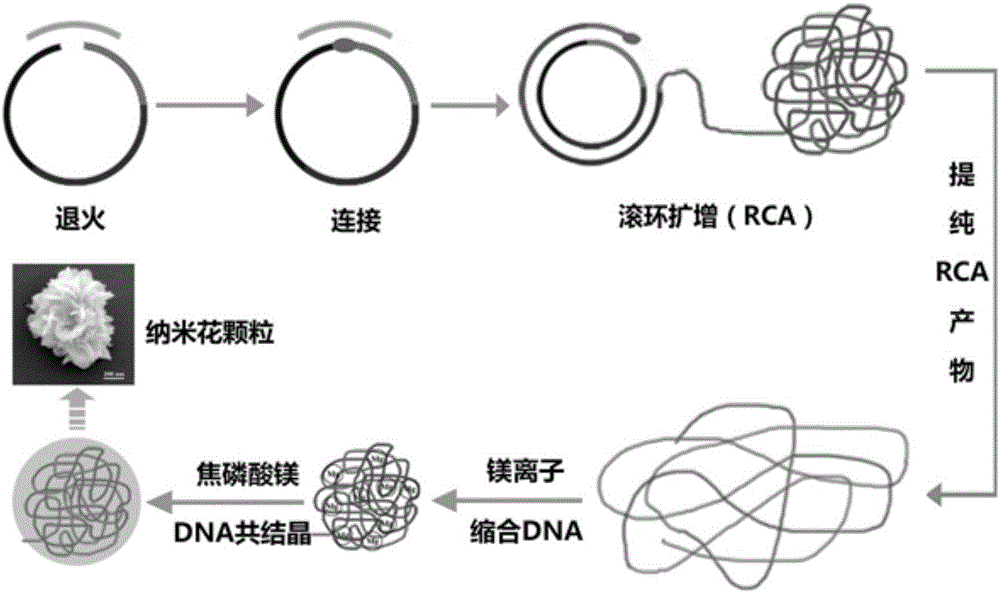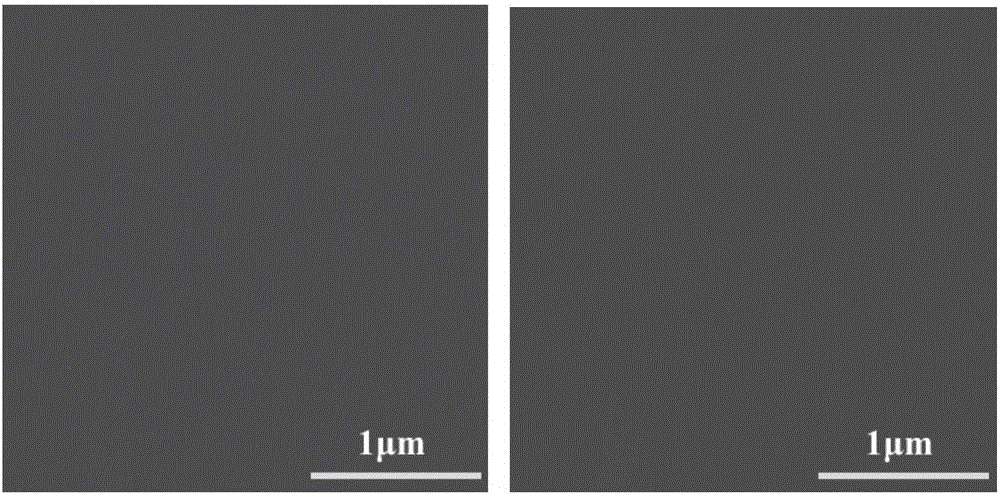Nucleic acid self-assembled composite nanoflower particle material as well as preparation method and application thereof
A composite material and self-assembly technology, applied in chemical instruments and methods, pharmaceutical formulations, other chemical processes, etc., can solve problems such as reducing meaning
- Summary
- Abstract
- Description
- Claims
- Application Information
AI Technical Summary
Problems solved by technology
Method used
Image
Examples
Embodiment 1
[0056] Embodiment 1 prepares self-assembled composite material
[0057] The preparation method of the self-assembled composite material is as follows figure 1 shown, including the following steps:
[0058] (1) Amplify the nucleic acid, specifically using the rolling circle amplification technique. Specifically, the linear single-stranded template DNA and the primer (an oligonucleotide complementary to the template sequence) recognize each other, and the two ends of the first and last ends are closed to form a circle. Linked into circular single-stranded DNA under the action of ligase;
[0059] (2) In the presence of polymerase and dNTPs, copy the circular template from the primer, perform infinite single-stranded amplification through strand displacement, and generate long single-stranded nucleic acid molecules with repeating template sequences;
[0060] (3) Prepare a DNA aqueous solution with a mass concentration of 0.1 mg / ml, and add Mg to the DNA aqueous solution 2+ solu...
Embodiment 2
[0064] In this example, the self-assembled composite material of Example 1 and magnesium pyrophosphate were stained with gel red, and verified with a confocal laser scanning microscope, and the results are shown in FIG. 2 .
[0065] from Figure 2(a)-2(b) It can be seen that when excited under 405nm excitation light, Mg 2 PPi / DNA-NFs emit distinct blue fluorescence, while Mg 2 P 2 o 7 The solution still cannot observe obvious blue fluorescence under a larger magnification. Gel red can stain DNA molecules, but it cannot stain inorganic crystals. Observation by confocal laser scanning microscope (CLSM) confirms that DNA molecules are wrapped in in nanoflower particles.
Embodiment 3
[0067] This embodiment verifies the self-assembled composite material of embodiment 1 with TGA and XRD, and the results are as follows image 3 shown.
[0068] Depend on image 3 It can be seen from the TGA diagram that: Mg 2 The weight loss of PPi / DNA-NFs is divided into three stages: 50-137℃, 6.5% weight loss, which is the volatilization of free water; DNA begins to pyrolyze; 183-800°C, 22.7% weight loss, this part is the pyrolysis of DNA, 58.5% mass remains in the whole thermal process, due to Mg 2 The melting point of PPi is 1383°C, so the residual substance at this stage is Mg 2 PPi, indicating that the prepared composite material has both DNA and Mg 2 Components of PPi.
PUM
| Property | Measurement | Unit |
|---|---|---|
| Particle size | aaaaa | aaaaa |
| Particle size | aaaaa | aaaaa |
Abstract
Description
Claims
Application Information
 Login to View More
Login to View More - R&D
- Intellectual Property
- Life Sciences
- Materials
- Tech Scout
- Unparalleled Data Quality
- Higher Quality Content
- 60% Fewer Hallucinations
Browse by: Latest US Patents, China's latest patents, Technical Efficacy Thesaurus, Application Domain, Technology Topic, Popular Technical Reports.
© 2025 PatSnap. All rights reserved.Legal|Privacy policy|Modern Slavery Act Transparency Statement|Sitemap|About US| Contact US: help@patsnap.com



